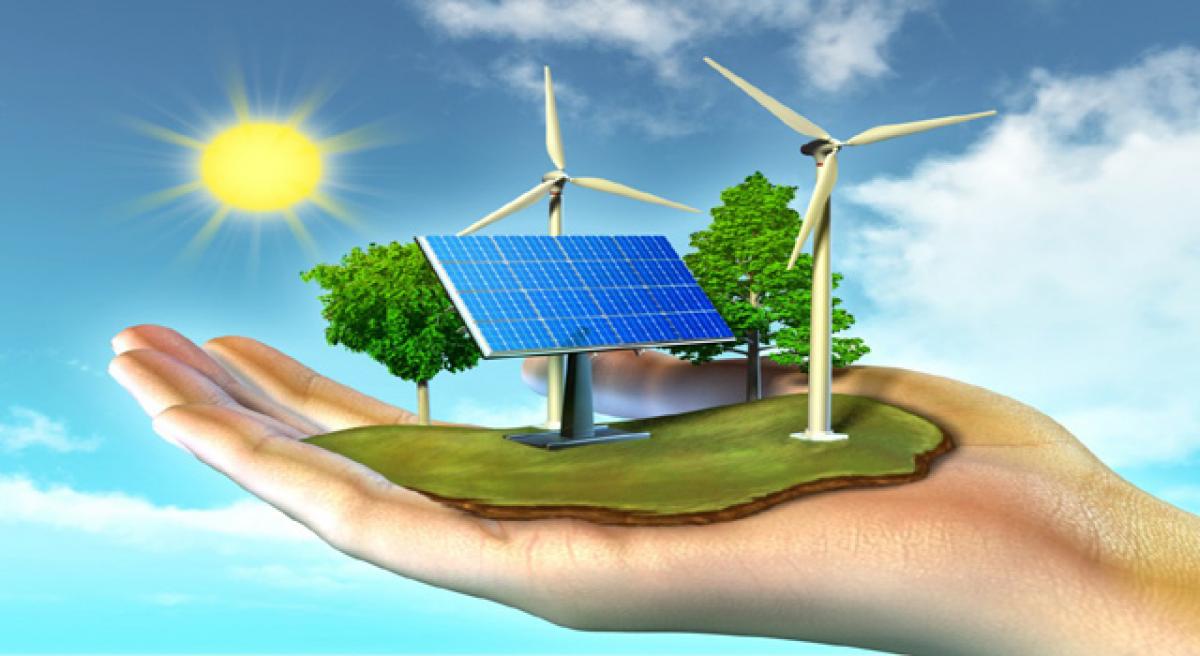Live
- Experts at COP29 urge India to tackle short-lived climate pollutants
- AGP inducts new locomotive
- Visakhapatnam: 31-year-old attacks girl for refusing his love
- MyVoice: Views of our readers 15th November 2024
- NWKRTC embraces digital payments to enhance passenger experience
- Beating plastic pollution,a serious task ahead
- Executive cannot ‘bulldoze’ judiciary: SC
- SC denies pre-arrest bail to Jaynarayan
- CM waives hostel food fee
- UBI celebrates 106th foundation day
Just In

In tune with India’s Intended Nationally Determined contributions (INDC), submitted to the United Nations Frame work convention on Climate change, that India will achieve 40% cumulative Electric power capacity from non-fossil fuel based energy resources by 2030 with the help of transfer of technology, Mega plans are being implemented in the Renewable Energy (RE) sector.
In tune with India’s Intended Nationally Determined contributions (INDC), submitted to the United Nations Frame work convention on Climate change, that India will achieve 40% cumulative Electric power capacity from non-fossil fuel based energy resources by 2030 with the help of transfer of technology, Mega plans are being implemented in the Renewable Energy (RE) sector.
Presently, per capita electricity consumption is only one fifth of the world average. Putting rationale behind thrust on the RE sector, the MNRE officials say the country’s present consumption is about 1150 BU and it should reach 1570 BU by 2022. India has an estimated renewable energy potential of about 900 GW from commercially exploitable sources viz. Wind – 102 GW (at 80 meter mast height); Small Hydro – 20 GW; Bio-energy – 25 GW; and 750 GW solar power, assuming 3% wasteland.
Recently, Record low solar and wind power tariffs in latest biddings have added another positive dimension to the sector. Bidders quoted a price of Rs 3.46 per kWh for 1 GW wind tender and Rs.2.97 per kWh for setting up of 750 MW solar power plant in Rewa. It made wind and solar competitive energy source.
Lower clean energy tariffs will pose major challenge to fossil fired power. The Ministry of New and Renewable Energy (MNRE) has set another record in the wind power capacity addition by adding over 5400 MW in 2016-2017 against the target of 4000 MW. Solar Parks and Ultra Mega Solar Power Projects will be set up by 2019-20 with Centre’s financial support of Rs.8100 crore.
The total capacity when operational will generate 64 billion units of electricity per year which will lead to abatement of around 55 million tons of CO2 per annum during its life cycle. Of the total sanctioned capacity of 1037.26 MW to 15 CPSUs/ Government organization within sanctioned funds of Rs.1000 crore for the scheme, solar projects of 441.50 capacity have already been commissioned so far.
The Government has set a target of 175 GW renewable power installed capacity by the end of 2022. This includes 60 GW from wind power, 100 GW from solar power, 10 GW from biomass power and 5 GW from small hydro power. A Rs 38,000 crore Green Energy Corridor is being set up to ensure evacuation of Renewable Energy.

© 2024 Hyderabad Media House Limited/The Hans India. All rights reserved. Powered by hocalwire.com







